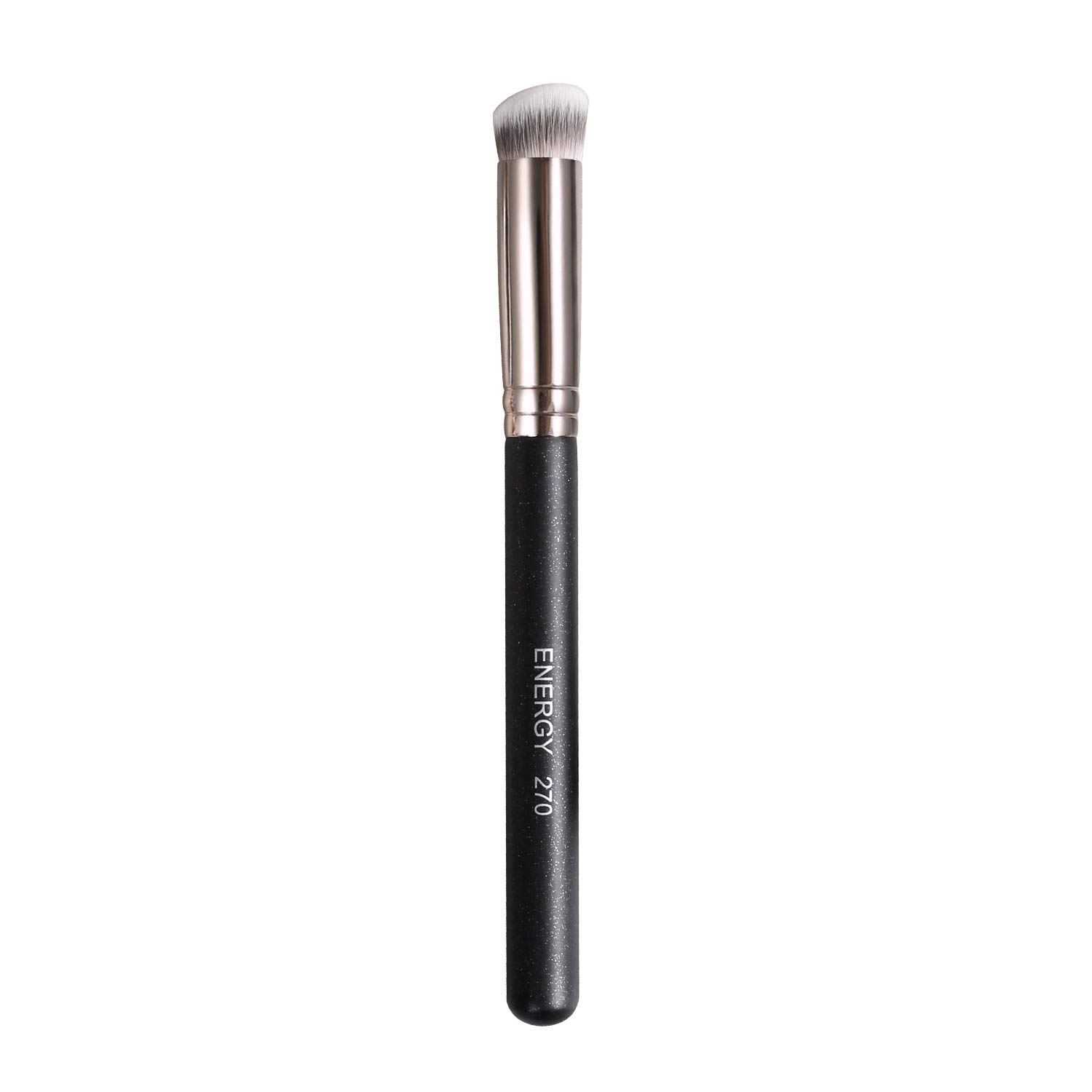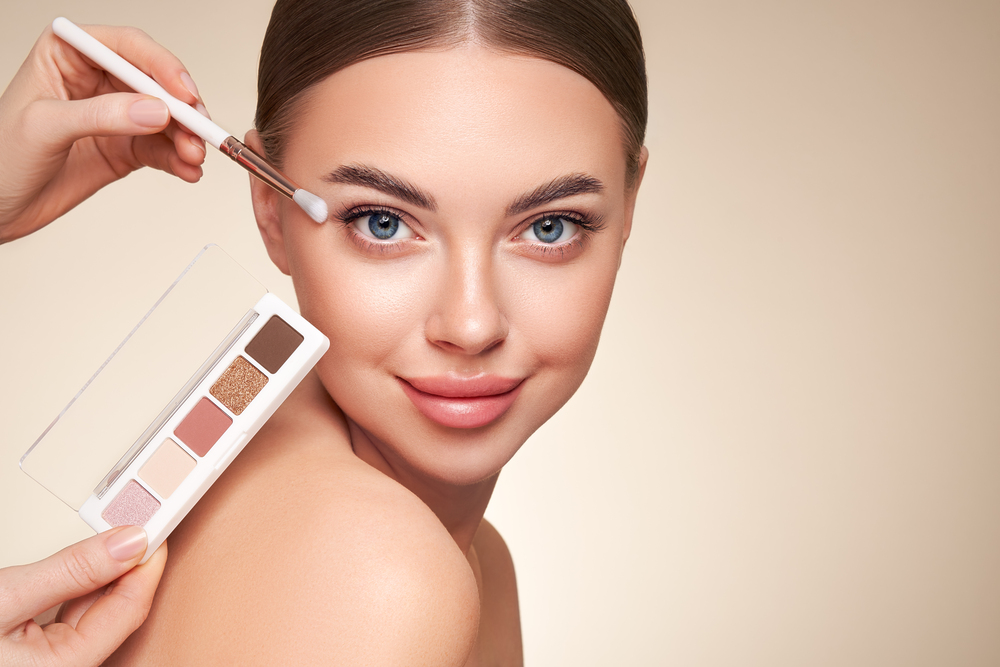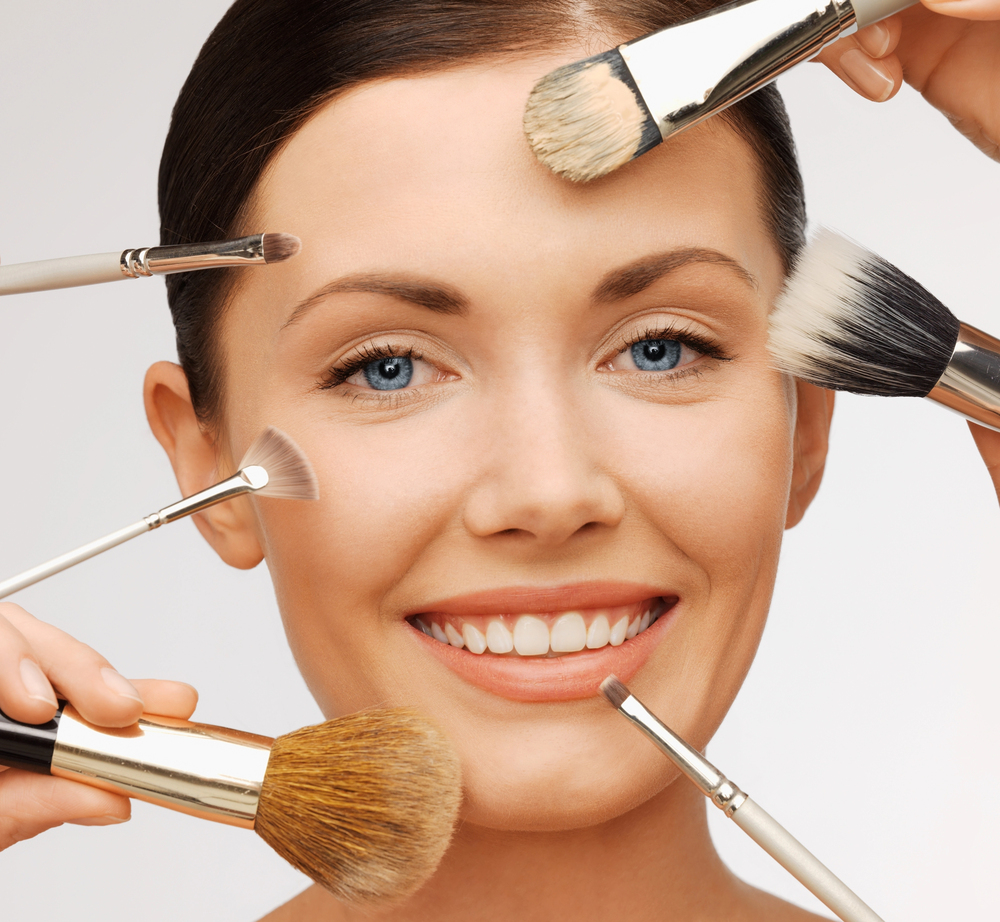
Know about makeup brushes and their uses can transform your makeup application. They come in various shapes, sizes, and materials, each designed for specific tasks. Understanding the purpose of each brush and how to use it correctly can significantly enhance your makeup results.
What You’ll Learn from This Guide
- Different Types of Makeup Brushes: From foundation brushes to eyeliner brushes, we’ll cover their unique purposes and best practices.
- Application Techniques: Learn how to apply makeup like a pro using the right brush for each product.
- Additional Tools: Explore other tools like beauty blenders and fan brushes that complement your brush collection.
- Care and Maintenance: Tips on how to clean, maintain, and store your brushes to extend their lifespan.
- Expert Tips: Discover tricks to enhance your makeup application skills and avoid common mistakes.
By the end of this guide, you’ll have a comprehensive understanding of makeup brushes and their uses, enabling you to elevate your makeup game with confidence.
If you are a beginner, start with our guide on the different Types of Makeup.
Understanding Different Types of Makeup Brushes
Foundation Brushes
Foundation brushes are essential for achieving a flawless base. They are specifically designed to evenly apply foundation on your skin, ensuring a smooth and natural finish. The choice of foundation brush can greatly influence your makeup results.
Description and Purpose of Foundation Brushes
Foundation brushes come in various shapes and sizes, each designed for specific applications. The main purpose of these brushes is to apply liquid or cream foundation evenly on the face, blending it seamlessly into the skin.
Some common types include:
- Flat Top Foundation Brush: Known for its dense bristles and flat surface, this brush provides excellent coverage and is ideal for buffing foundation into the skin.
- Kabuki Brush: Characterized by its short handle and densely packed bristles, the kabuki brush offers a natural, airbrushed finish. It’s versatile enough for both liquid and powder foundations.
Differences Between Flat Top and Kabuki Brushes
Understanding the differences between these two popular makeup brushes and their uses can help you choose the best tool for your needs:
- Flat Top Foundation Brush:
- Characteristics: Dense, flat bristles; typically larger surface area.
- Best Use: Ideal for quick application of liquid foundation; provides full coverage.
- Application Tip: Use in a circular motion to buff foundation into the skin for a seamless look.
- Kabuki Brush:
- Characteristics: Short handle; dense, rounded bristles.
- Best Use: Suitable for liquid, cream, and powder foundations; offers a softer, more natural finish.
- Application Tip: Apply foundation with light, sweeping motions to avoid streaks.
Best Practices for Applying Foundation with Brushes
To achieve the best results when using foundation brushes:
- Prep Your Skin: Ensure your face is clean and moisturized before applying any makeup.
- Apply Small Amounts: Start with a small amount of foundation. It’s easier to build coverage than to remove excess product.
- Blend Thoroughly: Use circular or dabbing motions to blend foundation into your skin. Avoid dragging or pulling at your skin.
- Clean Your Brushes Regularly: Regular cleaning prevents product buildup and bacteria growth.
By understanding makeup brushes and their uses, and by following these best practices, you can enhance your makeup application skills and achieve professional-looking results at home.
Understanding different types of makeup brushes is essential for anyone looking to elevate their makeup game. Each brush type offers unique benefits tailored to specific applications, making them indispensable tools in any beauty routine.
Concealer Brushes
Characteristics and Usage of Concealer Brushes
Concealer brushes are typically small, flat, and have densely packed bristles. They are designed to provide precise application of concealer to target areas such as blemishes, dark circles, and redness. The size and shape of these brushes allow you to reach smaller areas of the face with accuracy, ensuring an even and smooth finish.
Techniques for Covering Blemishes and Dark Circles
To cover blemishes:
- Choose a brush with a pointed tip: This allows for targeted application directly over the blemish.
- Dab, don’t drag: Gently dab the concealer onto the blemish using the brush to avoid spreading bacteria and to keep the coverage concentrated.
To cover dark circles:
- Use a brush with a rounded or slightly tapered edge: This ensures gentle application under the delicate eye area.
- Apply in a triangle shape: Start from the inner corner of your eye and extend downwards towards your cheek before blending upwards. This technique provides a more natural and lifted look.
Selecting the right concealer brush can significantly improve your makeup results by ensuring precise application and better blending.
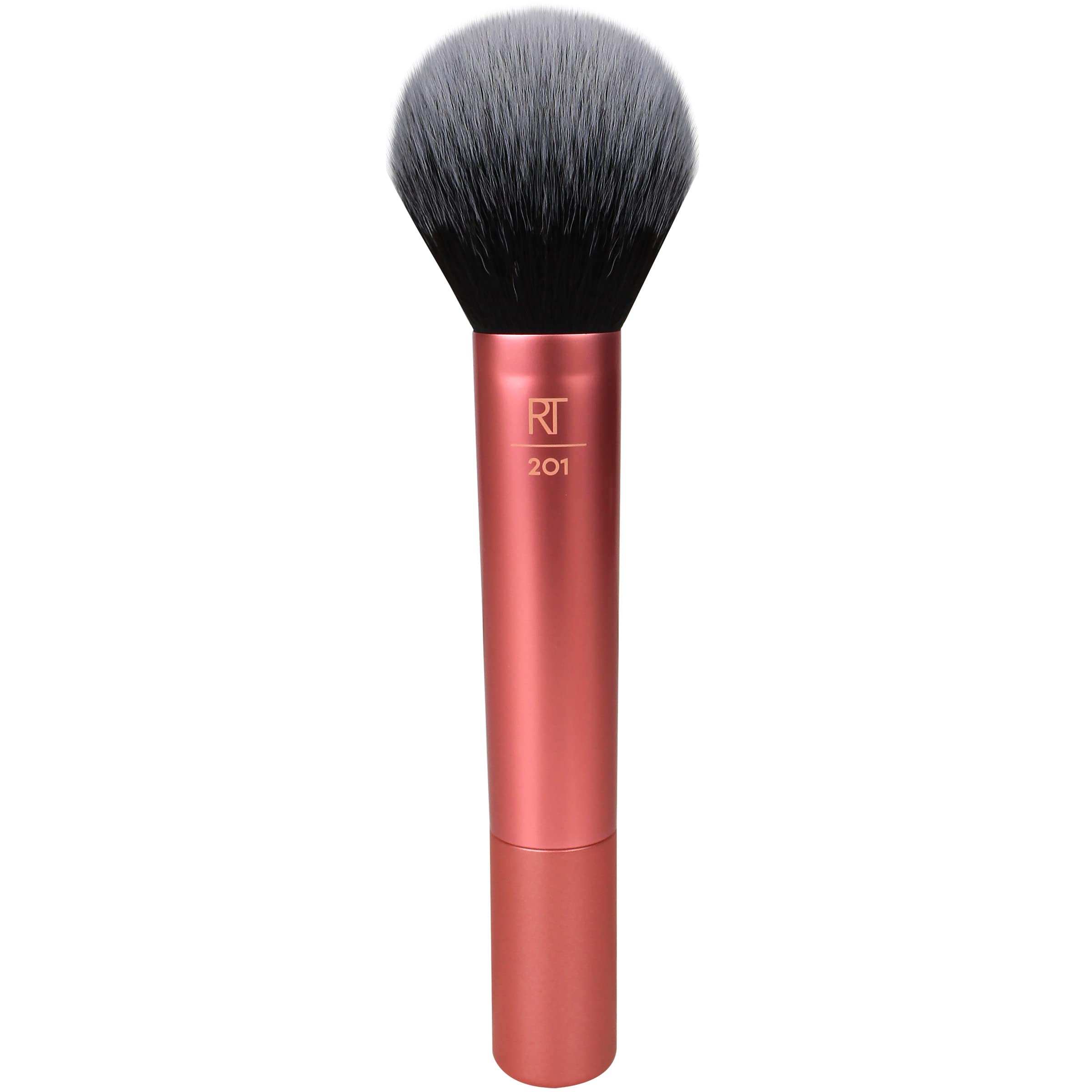
Powder and Blush Brushes
Powder Brushes
Powder brushes play a crucial role in setting your makeup. Their large, fluffy, domed shape allows for even distribution of powder products across the face. Whether you’re applying a setting powder to lock in your foundation or a powder bronzer for added warmth, using the right brush ensures a seamless finish.
- Application Tip: Dip your powder brush into the product, tap off the excess, and lightly dust it over your face in sweeping motions. This technique helps avoid cakiness and provides a natural-looking finish.
Blush Brushes
Choosing the right blush brush can make all the difference in achieving a natural look. These brushes are typically smaller with slightly angled bristles to fit the contours of your cheeks perfectly.
- Types of Blush Brushes:
- Angled Blush Brush: Ideal for precise application on the apples of your cheeks.
- Tapered Blush Brush: Offers more control and is great for blending out harsh lines.
- Application Tip: Smile to find the apples of your cheeks, then gently sweep the blush brush from the apples towards your temples. This creates a lifted, youthful look without harsh lines.
Both powder and blush brushes are essential tools in any makeup arsenal. Selecting high-quality makeup brushes and their uses tailored to specific products can dramatically improve your makeup results, providing a flawless and professional finish every time.

Contour and Bronzer Brushes
Importance of Contouring in Makeup Application
Contouring is essential for defining and enhancing your facial features. With the right contour brush, you can create shadows and highlights that add depth to your face. This technique can slim down certain areas while accentuating others, giving you a sculpted look that appears both natural and refined.
Techniques for Using Contour and Bronzer Brushes Effectively
To achieve precise contouring, consider these tips:
For Contouring:
- Choose the Right Brush: Opt for an angled and dense contour brush specifically designed to fit into the hollows of your cheeks, along the jawline, and around the hairline.
- Application: Start with a small amount of product on your brush. Apply it under your cheekbones, blending upward toward the ears. To contour the jawline, sweep the brush along the edge of your jaw and blend downward.
For Bronzing:
- Select an Appropriate Brush: Use a wide and fluffy bronzer brush with an angled design to evenly distribute bronzer across larger areas.
- Application: Swirl a small amount of bronzer onto your brush. Apply it on areas where the sun naturally hits—like your forehead, nose, cheeks, and chin. Use circular motions to blend for a seamless finish.
Knowing how to use these brushes effectively can greatly improve your makeup skills. By selecting the right tools for contouring and bronzing, you’ll ensure precise application every time.

Eye Makeup Brushes
Flat Eyeshadow Brushes & Crease Brushes
When it comes to eye makeup, having the right tools can significantly impact your results. Two essential brushes in this category are the flat eyeshadow brush and the crease brush.
Flat Eyeshadow Brush
The flat eyeshadow brush is designed for applying eyeshadow evenly across your eyelids. Its dense, flat bristles pick up a good amount of product, ensuring vibrant color payoff.
Application Techniques:
- Packing on Color: Load the brush with eyeshadow and gently press it onto your eyelid. This technique is perfect for achieving a bold, pigmented look.
- Blending Edges: While primarily used for application, you can also use the edge of this brush to softly blend out harsh lines where needed. If you find that your eyeshadow always blends into one shade, consider these tips to fix this common issue: How to Fix Blending Issues.
Crease Brush
The crease brush is essential for adding depth and dimension to your eye look. Its tapered bristles fit perfectly into the crease of your eye, making it easy to apply darker shades that create a contoured effect.
Application Techniques:
- Defining the Crease: Dip the tip of the brush into a darker shade and sweep it back and forth in your eye crease using windshield wiper motions. This helps to define and deepen your eye shape.
- Blending Shadow: After placing the color, use small circular motions to blend out any harsh lines for a seamless transition between colors.
Combining Flat Eyeshadow & Crease Brushes
Using these brushes together can create a complete and polished eye look. Start by applying a base color with the flat eyeshadow brush across your entire lid. Then, use the crease brush to add a deeper shade in the crease area, blending well to avoid any stark lines. This combination creates depth and dimension, making your eyes appear larger and more defined.
Incorporating these makeup brushes and their uses into your routine not only enhances your overall makeup look but also allows for greater precision and control in application. Whether you’re aiming for a natural daytime look or an intense evening smokey eye, these tools are indispensable in achieving professional-level results.
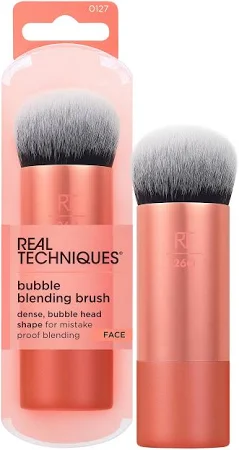
Blending Brushes, Pencil Brushes & Eyeliner Brushes
1. Blending Brushes
Blending brushes are essential tools in any makeup kit. They are designed to soften transitions between colors, creating a seamless gradient on the eyelids. These brushes typically have fluffy, dome-shaped bristles that help diffuse eye shadow evenly. When using a blending brush, you can achieve a smooth transition from one shade to another, preventing harsh lines and giving your eye makeup a professional finish.
2. Pencil Brushes
Pencil brushes, with their small, tapered tips, are perfect for detailed work around the eyes. These brushes excel at:
- Smudging eyeliner for a smoky effect.
- Applying shadow precisely along the lash line.
- Adding highlights to the inner corners of the eyes.
Their precision makes them indispensable for intricate looks and fine detailing.
3. Eyeliner Brushes
Eyeliner brushes come in various forms, including angled and straight versions. They are specifically designed for applying gel or liquid eyeliner with accuracy. Here are common types of eyeliner brushes:
- Angled Eyeliner Brush: Provides control and precision, ideal for creating sharp lines or winged eyeliner looks.
- Straight Eyeliner Brush: Typically used for tightlining or achieving a more natural liner look close to the lash line.
Using these brushes correctly can significantly enhance your eye makeup game. For instance, an angled eyeliner brush can help you perfect that cat-eye flick, while a straight brush is excellent for subtle definition.
Understanding makeup brushes and their uses will help you make informed choices. This breakdown of various eye makeup brushes and their specific uses can elevate your makeup application skills, making it easier to achieve any desired look.

Mascara Wands, Brow Tools & Lip Brushes
Mascara Wands
Mascara wands are crucial for achieving voluminous and defined lashes. The design of the wand can significantly impact the result:
- Straight wands: Ideal for lengthening lashes.
- Curved wands: Help in curling and lifting the lashes.
- Thick bristled wands: Best for adding volume.
A high-quality mascara wand ensures even application without clumping, enhancing the overall eye makeup look.
Brow Tools
Well-groomed eyebrows frame the face and enhance your makeup. Brow tools come in various forms:
- Brow brushes/spoolies: Used to comb through brows, blending product evenly.
- Angled brow brushes: Essential for applying brow powders or pomades with precision.
- Brow pencils: Perfect for filling in sparse areas with fine strokes.
Maintaining a well-defined brow shape can elevate your entire makeup routine.
Lip Brushes
Precision is key when it comes to lip application. Lip brushes ensure clean lines and even color distribution:
- Lip liner brushes: Useful for outlining lips and preventing lipstick from bleeding.
- Flat lip brushes: Allow for filling in the lips with color accurately.
- Retractable lip brushes: Convenient for on-the-go touch-ups.
Using a lip brush not only provides precision but also helps in blending lip colors seamlessly, creating a polished finish.
By incorporating these makeup brushes and their uses into your routine, you can achieve professional-level results at home.
Additional Tools for Makeup Application: Beauty Blenders, Silicone Blenders & Fan Brushes
Beauty Blender vs. Silicone Blender
Beauty Blenders and Silicone Blenders offer unique approaches to makeup application.
1. Beauty Blender
A teardrop-shaped sponge that is ideal for blending liquid and cream products seamlessly into the skin. Its porous texture allows for a natural, airbrushed finish.
Application: Dampen the sponge before use to prevent product absorption. Use bouncing motions to blend foundation or concealer.
2. Silicone Blender
Made of non-porous silicone, this tool is designed to minimize product waste.
Application: Apply a small amount of product directly onto the blender and spread it across your face in circular motions. The smooth surface ensures an even application without absorbing any makeup.
Unique Uses for Fan Brushes
Fan Brushes are versatile tools often overlooked in makeup routines.
1. Highlighting
The fan brush’s thin, wide bristles make it perfect for applying highlighter along the cheekbones, brow bones, and down the bridge of the nose.
Technique: Lightly sweep the brush over your highlighter powder and apply in soft strokes for a subtle glow.
2. Correcting Mistakes
Fan brushes can also remove excess powder or fallout from eyeshadow without disturbing your base makeup.
Technique: Gently flick away any unwanted particles with the edge of the brush.
Incorporating these tools into your routine can elevate your makeup application, providing both precision and efficiency.

Cleaning, Maintaining & Finding the Best Makeup Brushes
Type of Makeup Brushes and the Importance of Regular Cleaning
Regularly cleaning your makeup brushes is essential for maintaining hygiene and ensuring the longevity of the brushes. Dirty brushes can harbor bacteria, which can lead to skin irritations or breakouts. Clean brushes also perform better, providing smoother and more even application of makeup products. For a detailed guide on how to clean your makeup brushes effectively, you might find this Vogue article helpful.
Recommended Cleaning Products and Techniques
To clean your brushes effectively, use gentle cleansers specifically designed for makeup tools:
- Brush Cleansers: Specially formulated to remove makeup residue without damaging the bristles.
- Baby Shampoo: A mild alternative that works well for deep cleaning.
- Silicone Cleaning Pads: Help to agitate the bristles and thoroughly clean them.
For those who prefer a DIY approach, consider making your own brush cleaner using some simple ingredients. This guide provides an excellent recipe for a homemade makeup brush cleaner.
Steps for cleaning:
- Wet the brush bristles with lukewarm water.
- Apply a small amount of cleanser to the bristles.
- Gently massage the bristles in circular motions on a silicone cleaning pad or your palm.
- Rinse thoroughly until water runs clear.
- Squeeze out excess water with a clean towel.
Proper Drying and Storage Tips
After washing, it’s crucial to dry your brushes properly:
- Reshape the bristles to their original form.
- Lay the brushes flat on a clean towel, with the bristles hanging off the edge of a counter to air dry. This prevents water from seeping into the handle and loosening the glue that holds the bristles together.
For storage:
- Keep brushes in a dry place to avoid moisture buildup.
- Use brush holders or cases to maintain their shape and protect them from dust.
Selecting Quality Makeup Brushes
When selecting makeup brushes, consider these factors based on your needs:
- Bristle Type: Natural vs. synthetic—synthetic is best for liquids/creams, while natural is ideal for powders.
- Handle Length: Short handles offer more control; long handles are better for professional use.
- Price Point: Higher-priced brushes are often made with better materials but excellent options exist at all price levels.
Investing in quality brushes tailored to your preferences can make a significant difference in your makeup application experience.
In addition, proper care and storage are vital for maintaining their quality over time.
Beauty Tips for Using Makeup Brushes Effectively
Enhancing your makeup application skills with the right tools can elevate your overall look. Here are some practical beauty tips for using makeup brushes and their uses effectively:
Tricks to Enhance Your Makeup Application Skills
- Use the Right Brush for Each Product
- Foundation: Opt for a flat top or kabuki brush.
- Concealer: Use a small, flat brush for precise application.
- Blush: Choose an angled brush to apply blush naturally.
- Mastering Brush Pressure
- Light pressure helps blend products seamlessly.
- Firm pressure is ideal for applying more product where needed.
- Layering Products
- Start with a light layer and build up as needed to avoid caking.
- Use different brushes for layering powders over creams.
Types of Makeup Brushes: Avoiding Common Mistakes
- Overloading Brushes with Product
- Tap off excess product before applying to prevent fallout and unevenness.
- Skipping Cleaning Routine
- Dirty brushes can harbor bacteria and affect makeup application. Clean them regularly.
- Using the Wrong Brush Size
- Large brushes can cover too much area, while small brushes might not blend well. Choose appropriately sized brushes for each task.
Learning Through Practice and Experimentation
- Experiment with Different Brushes
- Try various brush types to see which works best for you.
- For example, test out both flat eyeshadow brushes and crease brushes to understand their unique benefits.
- Practice Different Techniques
- Practice blending techniques with blending brushes to achieve softer transitions between colors.
- Experiment with contouring angles using contour and bronzer brushes.
- Seek Feedback
- Ask friends or watch tutorials to refine your technique.
- Incorporate new methods into your routine based on feedback and personal experience.
By integrating these tips into your routine, you’ll find that your makeup application becomes more efficient and effective.
Conclusion: Embrace the Power of Proper Brush Techniques!
Using the right makeup brushes and knowing how to use them can completely change the way you do your makeup. When you choose the right tools and learn how to use them properly, you can take your skills to the next level and get results that look like they were done by a professional.
Here are a few things to keep in mind:
- Invest in quality brushes.
- Maintain them regularly for longevity.
- Experiment with different applications.
With the right brush techniques, you can unlock your full potential and create stunning looks every time. So go ahead, embrace the power of proper brush techniques and enjoy your makeup application!
FAQs (Frequently Asked Questions)
What are the different types of makeup brushes?
Makeup brushes come in various types, including foundation brushes, concealer brushes, powder and blush brushes, contour and bronzer brushes, and eye makeup brushes. Each type serves a specific purpose in makeup application.
Why is it important to choose the right makeup brush?
Choosing the right brush can significantly impact your makeup results. The correct brush ensures even application, enhances product performance, and helps achieve desired looks more effectively.
How do I apply foundation using a makeup brush?
To apply foundation with a brush, use a foundation or kabuki brush. Start by dotting foundation on your face and then blend it outwards using circular motions for a seamless finish.
What techniques can I use with concealer brushes?
Concealer brushes are best used for covering blemishes and dark circles. Use a dabbing motion to apply concealer directly onto the area you want to cover, then blend gently with the brush for a natural look.
How should I clean my makeup brushes?
Regular cleaning is essential for hygiene and longevity of your brushes. Use gentle soap or specialized brush cleaners, rinse thoroughly, reshape bristles, and lay them flat to dry to maintain their quality.
What additional tools can enhance my makeup application?
In addition to traditional brushes, beauty blenders and silicone blenders can provide different finishes. Fan brushes are great for highlighting and correcting mistakes. Experimenting with these tools can elevate your makeup skills.

